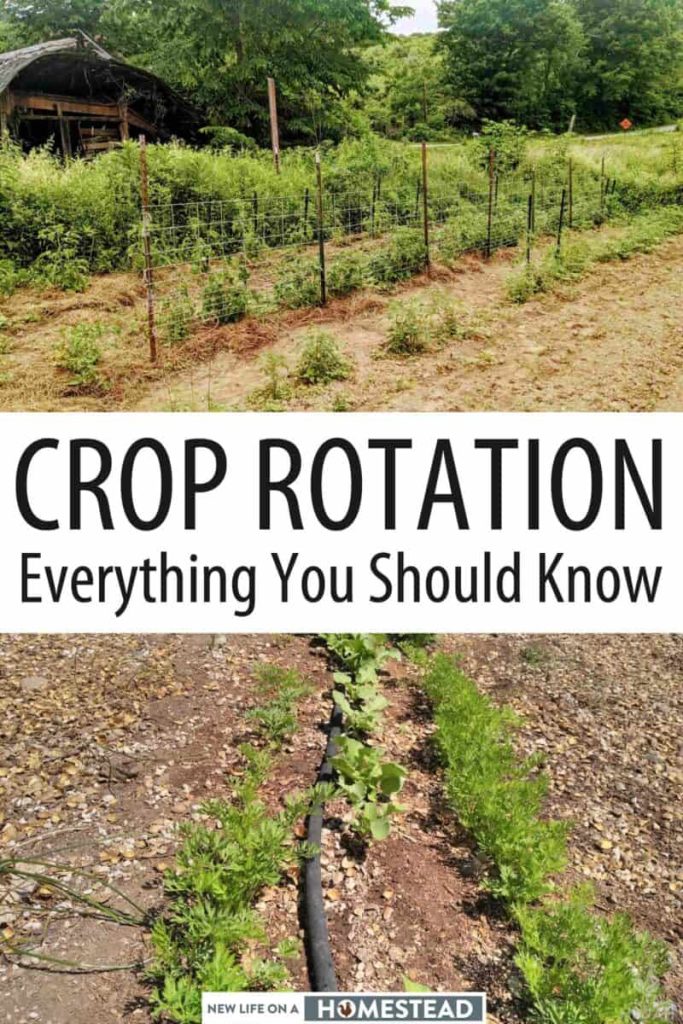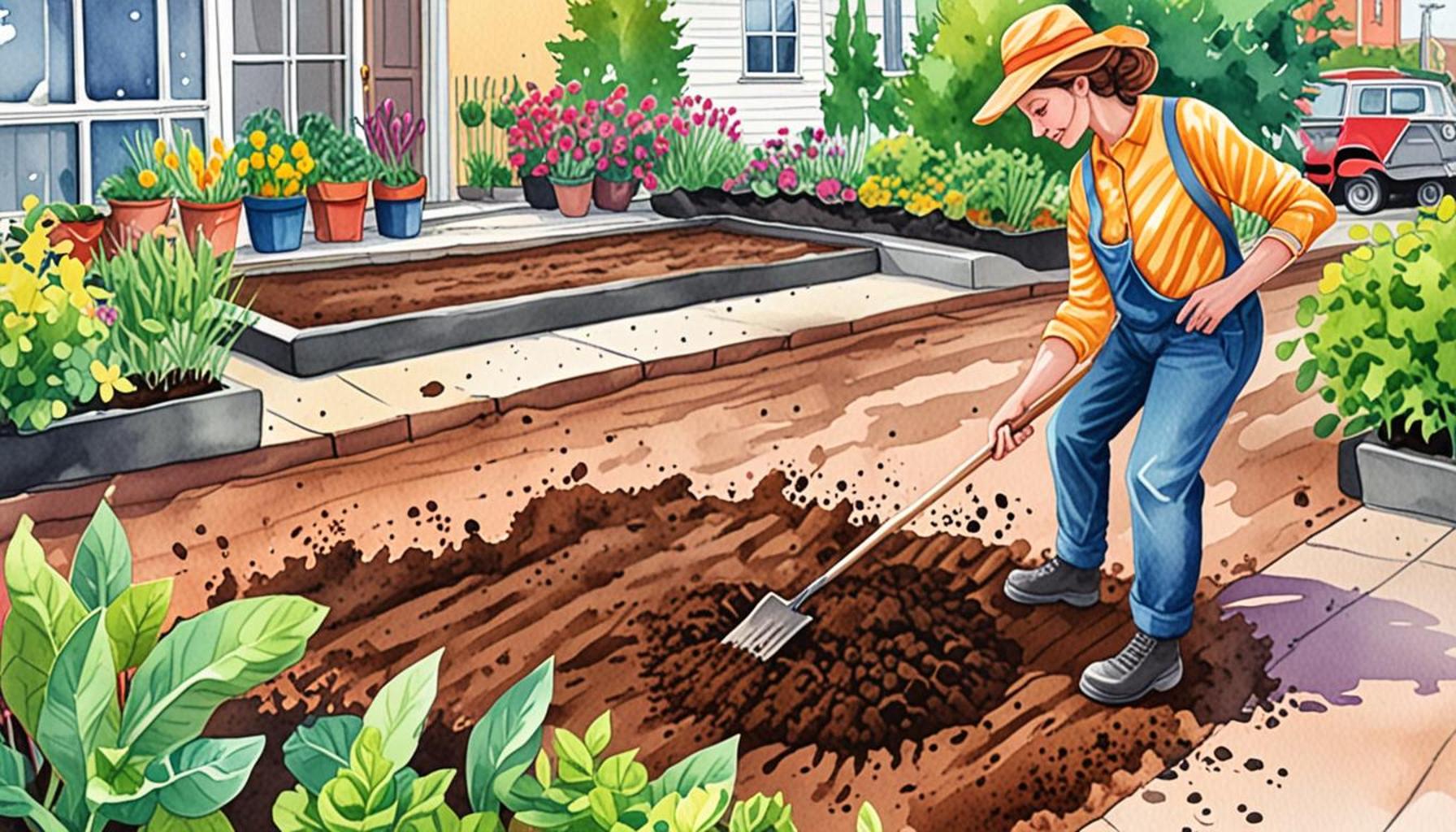How Crop Rotation Can Benefit Soil Preparation in Beginner Gardens

Unlocking the Secrets of Crop Rotation
Gardening is not just a hobby; it’s a science that requires knowledge and strategy. One of the simplest yet most effective techniques for improving soil health is crop rotation. This age-old practice is essential for both novice and seasoned gardeners as it enhances soil fertility, optimizes space, and promotes sustainable gardening practices.
Understanding the benefits of crop rotation can lead to a thriving garden. Here’s why it’s worth considering:
- Enhances Soil Nutrients: Different plants absorb various nutrients from the soil while having different nutrient requirements. For example, legumes like peas and beans can fix nitrogen in the soil, making it more available for other plants in subsequent seasons. When crops are rotated, it helps maintain a balanced nutrient profile, preventing nutrient depletion and leading to healthier plants.
- Reduces Pests and Diseases: Changing the type of plants in a garden each season disrupts pest life cycles. For instance, if a pest thrives on tomatoes, rotating that crop with a different family, such as lettuce or carrots, can break the pest’s lifecycle and reduce infestations. This natural form of pest management leads to fewer chemical interventions and helps in maintaining a healthier ecosystem.
- Promotes Soil Structure: Diverse root systems from different crops improve soil aeration and water retention. Deep-rooted plants like carrots break up compacted soils, allowing better air and moisture flow, while shallow-rooted plants help prevent erosion. This healthy soil structure is vital for nurturing robust plants and increasing overall garden yields.
For beginners eager to maximize their gardening success, implementing crop rotation could be a game-changer. A simple strategy could involve dividing the garden into sections dedicated to families of plants, such as brassicas (cabbage family), nightshades (tomatoes and peppers), and root vegetables. This not only leads to healthier plants but also creates a more sustainable gardening environment where soil health is prioritized.
As you delve deeper into this article, you’ll uncover practical tips and engaging methods to incorporate crop rotation into your beginner garden. For example, consider using a three-year rotation plan where tomatoes are grown in one section the first year, followed by leafy greens the second year, and then root vegetables the third year. This practice can significantly enhance yields and reduce the risk of soil-borne diseases.
Discover how simple changes can yield impressive results and transform your gardening experience. Whether you’re growing vegetables on a balcony or managing a larger garden plot, understanding the mechanics of crop rotation will elevate your gardening skills and contribute to a healthier planet.

LEARN MORE: Click here to discover how to care for indoor cacti
The Science Behind Soil Health and Crop Rotation
Soil is often referred to as the backbone of gardening. A garden’s success hinges on the health of its soil, which serves as the primary source of nutrients for plants. Crop rotation is a vital technique that fosters a thriving soil ecosystem, especially for beginner gardeners who may still be learning the intricacies of plant nutrition and growth. By rotating crops, gardeners can enhance soil preparation in several meaningful ways.
One of the most immediate benefits of crop rotation is its impact on soil fertility. When plants are grown in the same spot year after year, they tend to deplete specific nutrients from the soil. For example, heavy feeders like tomatoes and corn extract significant amounts of nitrogen. By alternating these crops with nitrogen-fixing plants like legumes, gardeners can naturally replenish the soil’s nutrient levels. This practice not only supports ongoing plant health but also minimizes the need for chemical fertilizers, leading to a more organic growing environment.
Moreover, crop rotation plays a crucial role in reducing soil-borne diseases. Many pests and pathogens are crop-specific. Persistent cultivation of the same vegetable family can create a favorable environment for diseases to establish and proliferate. By implementing a rotational system, you can effectively disrupt these cycles. For instance, after planting cucumbers one season, following it with a member of the allium family, such as onions or garlic, can significantly reduce the chances of disease buildup in the soil.
Understanding Plant Families
To successfully practice crop rotation, it’s important for beginner gardeners to understand the concept of plant families, as this knowledge aids in proper crop selection. Here’s a simple breakdown of some common plant families and their characteristics:
- Brassicaceae (Cabbage Family): Includes cabbage, broccoli, and kale. These plants are known for benefiting soil health by accumulating nutrients.
- Solanaceae (Nightshade Family): Contains tomatoes, potatoes, and peppers. These are heavy feeders and should be followed by soil-improving crops.
- Apiaceae (Carrot Family): Encompasses carrots, celery, and parsley. They have deep roots that can help break up compacted soil.
- Fabaceae (Legume Family): This includes peas and beans, which enrich the soil with nitrogen and improve its structure.
Understanding these families will help you design a strategic planting schedule that not only benefits your soil but also optimizes space in your garden. For instance, you might plant leafy greens where tomatoes were previously grown, allowing the soil to recover before introducing another heavy feeder like peppers.
As you begin implementing crop rotation in your gardening routine, you’ll witness not just healthier plants but also a vibrant ecosystem taking root in your plot. The transition may be gradual, but the rewards will manifest through abundant yields and nutrient-rich soil that supports a sustainable gardening approach.
| Advantage | Description |
|---|---|
| Improved Soil Fertility | Crop rotation helps in utilizing nutrients effectively, as each crop tends to absorb different nutrients. This diversity maintains a balanced soil ecosystem. |
| Pest and Disease Management | Rotating crops can disrupt pest life cycles, which leads to fewer infestations and lower pesticide use in beginner gardens. |
| Enhanced Soil Structure | Different root structures from various plants can improve soil aeration and drainage, creating a more dynamic growth environment for all crops. |
| Weed Control | By varying the planting schedule and type, crop rotation can effectively reduce weed emergence and competition, leading to a healthier garden ecosystem. |
Crop rotation stands out as a beneficial practice that not only enriches soil but also supports overall garden health. By introducing a variety of crops, novice gardeners can tap into natural processes that enhance nutrient availability while simultaneously curbing pests and diseases. For instance, legumes such as beans and peas can fix atmospheric nitrogen back into the soil, boosting its fertility for subsequent plantings. Moreover, implementing a rotation strategy can directly contribute to superior soil structure and moisture retention. Understanding these multifaceted benefits not only makes gardening easier but also significantly maximizes harvest potential, paving the way for a flourishing beginner garden. With proper implementation of crop rotation, beginner gardeners can cultivate a resilient gardening strategy that supports sustainable practices and encourages biodiversity. The variety in crops will also appeal to the exploratory instincts of novice gardeners, providing them with hands-on learning experiences while enhancing their soil preparation techniques. Exploring the art of crop rotation not only yields immediate results but also sows the seeds for long-term benefits in their gardening journey.
LEARN MORE: Click here for insights on drainage in gardening
Enhancing Soil Structure and Preventing Erosion
In addition to improving soil fertility and combatting diseases, crop rotation significantly contributes to enhancing soil structure and preventing erosion, especially vital for beginner gardeners who may not yet recognize the vulnerability of their plots. When crops are rotated thoughtfully, it promotes a diverse root system that can lead to better soil aggregation. Soil aggregation refers to the grouping of soil particles, which creates larger pores and improves aeration, drainage, and root penetration.
Different plants have unique root structures that interact with the soil in various ways. For instance, while deep-rooted crops like carrots or beets can break through compacted layers, shallower-rooted plants like lettuce or radishes can help keep the surface of the soil loose. By alternating between these kinds of plants, you not only tap into the various benefits each offers but also enhance soil aeration and moisture retention, crucial for sustaining healthy soil throughout the growing season.
Furthermore, implementing cover crops during the off-season can be an excellent strategy within a crop rotation framework. Cover crops are planted specifically to cover the soil rather than for harvest. They protect against erosion, suppress weeds, and improve soil health by adding organic matter when tilled under. For instance, planting clover or vetch during the winter months will enrich the soil with nitrogen by the time spring planting rolls around. This practice fosters a regimen that maintains soil integrity year-round.
Strategic Plant Placement and Companion Planting
Effective crop rotation goes hand in hand with strategic plant placement and companion planting. Beginner gardeners can utilize these techniques to maximize garden productivity while ensuring the long-term health of their soil. Some plants thrive better when grown alongside others; for example, bean plants, which fix nitrogen, can benefit corn and squash when planted in proximity. These relationships can be integrated into the rotation cycle to further enhance soil enrichment.
- Beans and peas: When planted with grass family crops like corn, they provide necessary nitrogen, boosting growth.
- Marigolds: These flowers repel harmful insects when interplanted with vegetables, protecting them without the use of chemical pesticides.
- Basil: Known to improve the flavor of tomatoes, basil also deters pests when grown alongside these fruits.
By understanding and applying these concepts, novice gardeners can create a more resilient garden ecosystem. Each growing season becomes an opportunity to learn from previous cycles, adjusting rotations and placements to optimize their harvests while nurturing their soil health.
Moreover, maintaining a well-documented planting schedule allows gardeners to observe which crop combinations yielded the best results, informing future planting strategies. This reflection fosters continual improvement, which is essential for developing skills and confidence in gardening practice. In addition, many gardening communities and extension services offer workshops and resources that can help beginners delve deeper into the science of crop rotation and its many benefits.
DISCOVER MORE: Click here to learn about the best plants for your garden
Conclusion
In summary, crop rotation serves as a cornerstone for successful soil preparation in beginner gardens, offering a myriad of benefits that extend far beyond simply changing what is grown. By understanding and applying the principles of crop rotation, novice gardeners have the power to enhance soil fertility, fight pest and disease cycles, and improve overall soil structure. The transition from traditional mono-cropping to a more diversified planting strategy enables a balance that caters to both immediate garden needs and long-term soil health.
Moreover, the integration of cover crops during the off-season and the harmonious practice of companion planting expands opportunities for novice gardeners to cultivate a thriving ecosystem. Through strategic plant placement, such relationships not only bolster soil nutrient levels but also deter pests, creating a natural synergy that boosts overall productivity. As every growing season unfolds, gardeners can build on learnt experiences, adjusting their methods to optimize results and refine their approaches to gardening.
Lastly, engaging with local gardening communities and leveraging available resources can deepen understanding and further enhance skills. Embracing the practice of crop rotation is not just about improving soil preparation but is also a journey toward cultivating a sustainable gardening practice that nourishes both the plants and the gardener. By taking these steps, beginners are well on their way to developing a flourishing garden and a deeper connection to the land.



